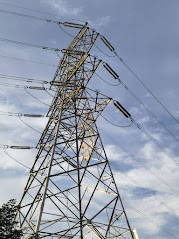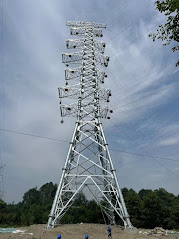Steel Pipe Combined Towers and Angular Steel Towers for Power Transmission
1. Structure - Pipe towers use steel pipe for legs and braces, while angular steel towers use lattice steel members bolted together.
2. Appearance - Pipe towers have a cleaner, less cluttered look with fewer members visible. Angular steel towers look more skeletal.
4. Weight - Pipe towers weigh more than angular steel for the same load capacity due to thicker material.
5. Cost - Pipe is generally more expensive material than angle steel. But pipe may require less fabrication time. Overall costs are similar.
6. Maintenance - Pipe towers require less maintenance as there are fewer connections and splices susceptible to loosening.
7. Corrosion - Pipe has better corrosion resistance as water drains easier and there are fewer places for moisture to accumulate.
8. Assembly - Pipe sections are easier and faster to erect requiring less field bolting. Angular steel requires extensive field assembly.
9. Modularity - Angular steel towers can be more easily modified and customized by altering brace configurations.
10. Insulators - Pipe towers provide direct pole mounting points for insulators while crossarms are needed on angular towers.
11. Height - Angular towers can typically reach greater heights than pipe towers for the same strength.
E-mail: towerxinhang@gmail.com
Tel: +86 15588600885
Web: https://xhtower.com/
Whatsapp: +86 15588600885




评论
发表评论